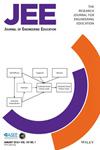A taxonomy of emerging engineering modeling judgment in undergraduate engineering courses
Abstract
Background
In professional contexts, engineers use engineering judgment to create mathematical models. Despite the importance of judgment in professional practice, the development and enactment of engineering judgment by engineering students are understudied. To better prepare students for engineering careers, there is a need to recognize and cultivate the beginnings of engineering judgment in undergraduate engineering students.
Purpose/Hypothesis
We offer a taxonomy for describing undergraduate students' emerging engineering modeling judgment skills in the context of open-ended problem solving and mathematical modeling. We characterize students' emerging engineering modeling judgment skills and identify opportunities to support students to engage in engineering judgment.
Design/Methods
In retrospective interviews, undergraduate students described how they had solved open-ended modeling problems. Through analysis of 34 interviews, we identified, categorized, and described emerging engineering modeling judgment.
Results
We developed the Emerging Engineering Modeling Judgment Taxonomy, which characterizes four emerging engineering modeling judgment skills: making assumptions; assessing the reasonableness of assumptions, outputs, and models; deciding when to override mathematically calculated answers; and deciding when and how to use technology tools. Undergraduate students demonstrated emerging engineering modeling judgment in these four skills.
Conclusions
This work highlights the capacity of undergraduate students to demonstrate productive beginnings of engineering judgment. We contribute a descriptive taxonomy to identify emerging engineering modeling judgment. Instructors may be able to use this taxonomy to identify and teach engineering judgment. These skills bridge the gap between closed-ended homework problems and the complex, ill-defined problems professional engineers solve.


 求助内容:
求助内容: 应助结果提醒方式:
应助结果提醒方式:


